2024 Porsche Cayenne E-Hybrid first drive: Huge tech upgrade, same class-leading drive
A major facelift to the third-gen Cayenne gives Porsche's SUV a significant but well-judged tech upgrade
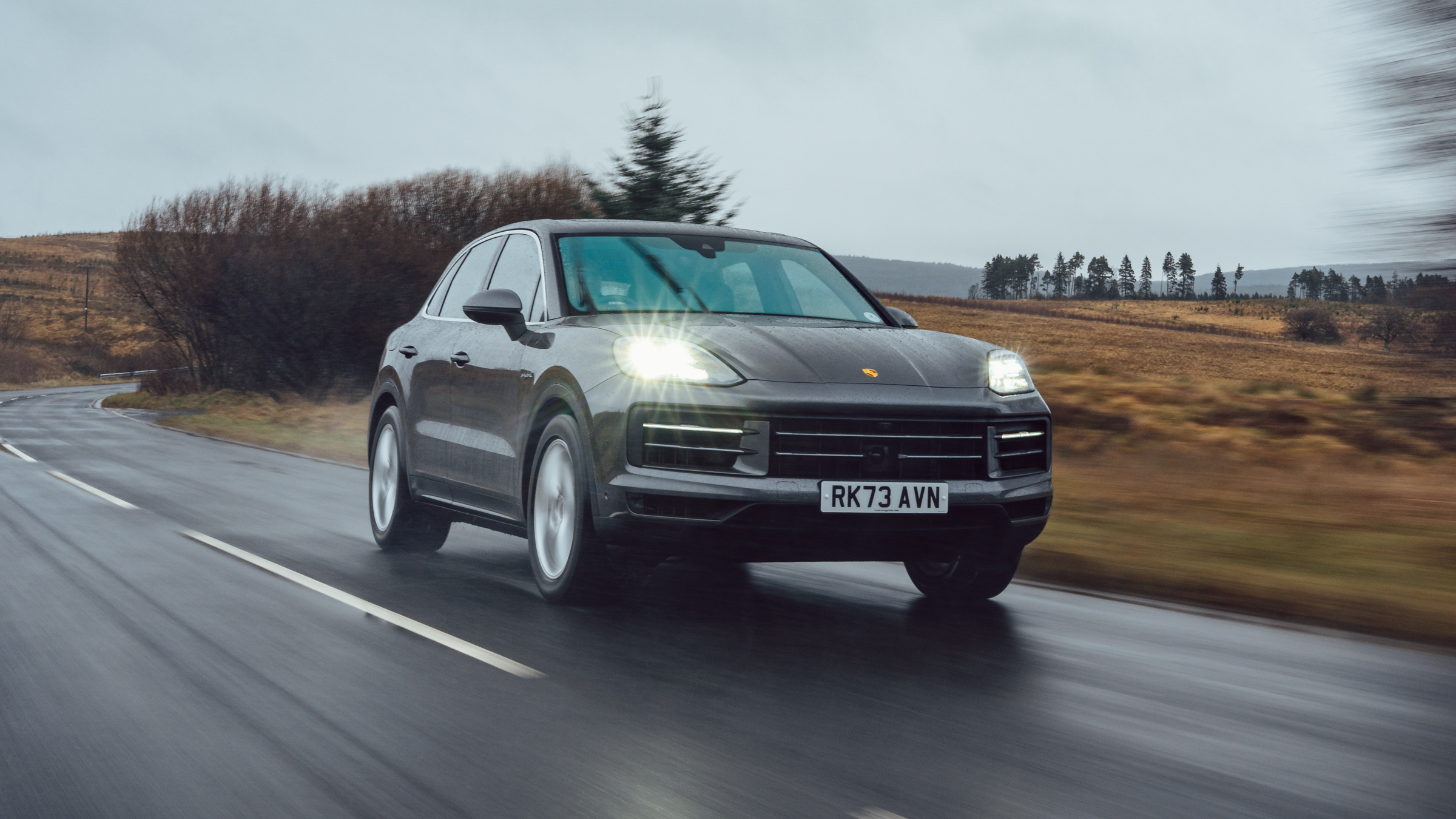

It’s what’s on the inside that counts. That’s the lesson learnt after spending a day with the new Porsche Cayenne.
The car arrives at a slightly awkward time for Porsche, as the third-generation Cayenne had started to feel its age but with the all-electric version still a couple of years away. So instead of an all-new, fourth-generation Cayenne, Porsche has given us a heavy refresh of the current model.
From the outside you’d be hard-pressed to tell the difference – the changes are mostly concentrated around the headlines and bumpers – but inside it really is all-new.
The cabin is similar to that of the new electric Macan, with its curved, all-digital driver display borrowed from the Taycan, a pair of infotainment displays sitting side-by-side and, mercifully, a dedicated panel with physical controls and clear digital readouts for the cabin climate positioned below. Porsche’s familiar clock/lap timer sprouts from the centre of the dashboard, while the gear shifter has been relocated to sit beside the driver display – again, like that of the Taycan.
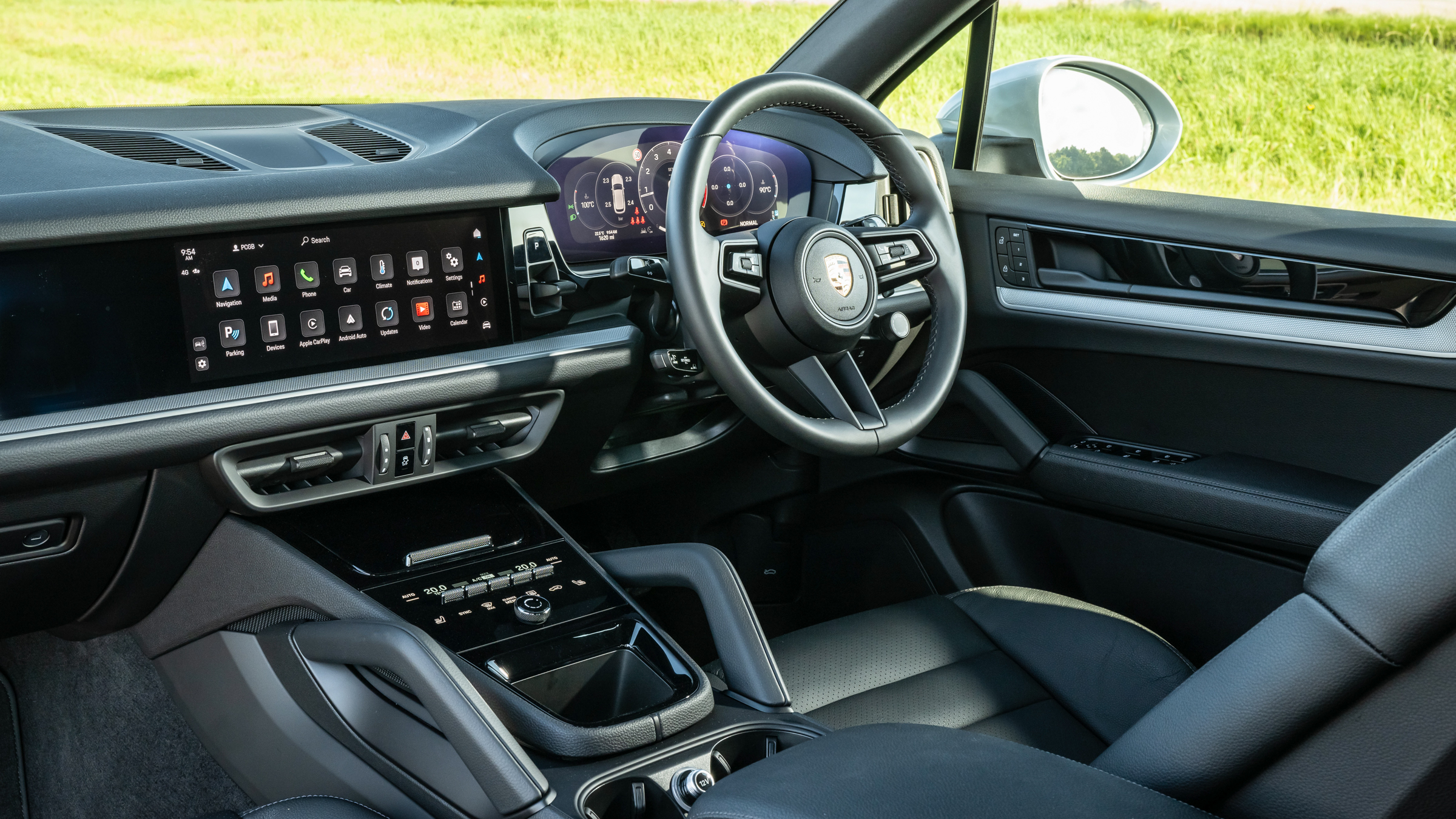
The secondary infotainment screen is an optional extra, as it is in the electric Macan, and is cleverly covered in a special film that means only the front passenger can view it. This means they can play DJ, tinker with the navigation or even stream video, while the screen appears blank when viewed from the driver’s seat. A second climate control panel installed ahead of the rear seat passengers is an optional extra.
My day was spent with the V6 hybrid variant, which is likely to be Porsche’s best-seller. Prices start just below £80,000 (but bumped up, as always, to £101,865 as tested) and it’s powered by a three-litre petrol engine producing 304 horsepower and 420 Nm of torque. This is joined by a 25.9 kWh battery and an electric motor outputting 176 hp and 460 Nm for a combined total of 470 hp and 650 Nm (remember, the differing power and torque curves of the engine and motor mean you can’t simply add the numbers together). The car is all-wheel-drive, naturally, and delivers its power through an eight-speed automatic gearbox that can be controlled with paddles behind the wheel if you wish.
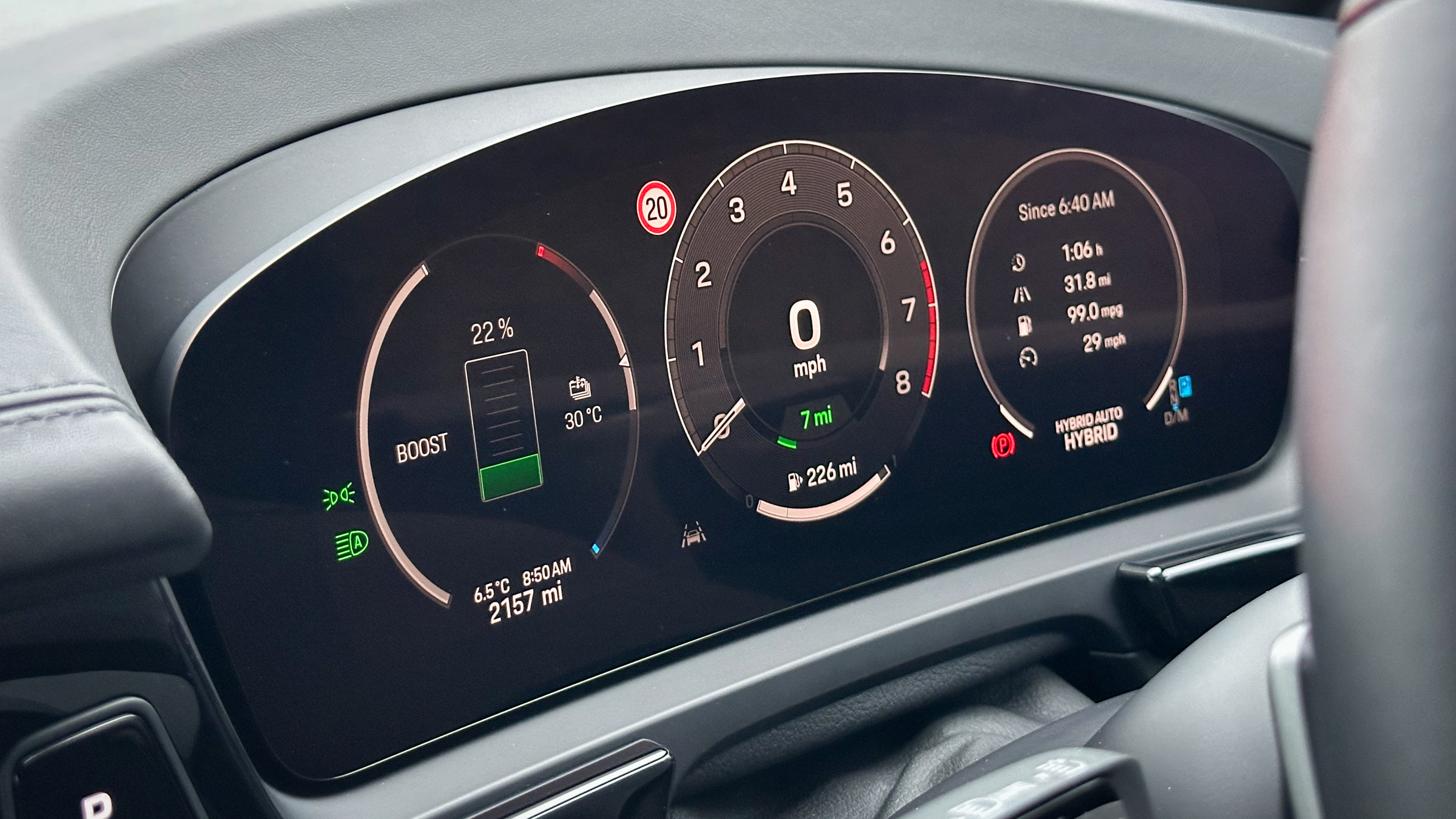
With a full charge the Cayenne began its day with an indicated 42 miles of electric range. This fell gradually during a morning of spirited driving across sweeping Northumbrian roads, the drivetrain smartly calling on the battery for extra shove when required, or shutting down the engine when it wasn't needed. The startup and shutdown of the V6 is often barely noticeable, unless you look out for the sudden rise or fall of the rev counter. The car made sure its electric range never fell below five miles, so there's always a bit left if you want to go full-EV. Or you can ask it to stop using the battery at any time and save its electrons for later. Porsche says the battery fills from empty in 2.2 hours using an 11 kW home charger.
Get all the latest news, reviews, deals and buying guides on gorgeous tech, home and active products from the T3 experts
Switch from normal to Sport or Sport Plus drive modes and the hybrid Cayenne reaches 62 mph in 4.9 seconds. Claimed top speed is 158 mph. It feels plenty quick enough in the real world, and what especially impresses is its overtaking performance; Porsche claims a 49 to 74 mph (80 to 120 km/h) time of just 3.1 seconds. Trundling countryside traffic is passed with ease.
Th big Porsche's handling is a joy. Rear traction was occasionally limited when exiting tight junctions on wet and greasy roads, but otherwise the Cayenne felt properly planted. It’s long been said that Porsche’s SUVs are the most enjoyable to drive; the sportiest in their price range, but without compromising on ride quality. The new Cayenne continues this trend with aplomb.
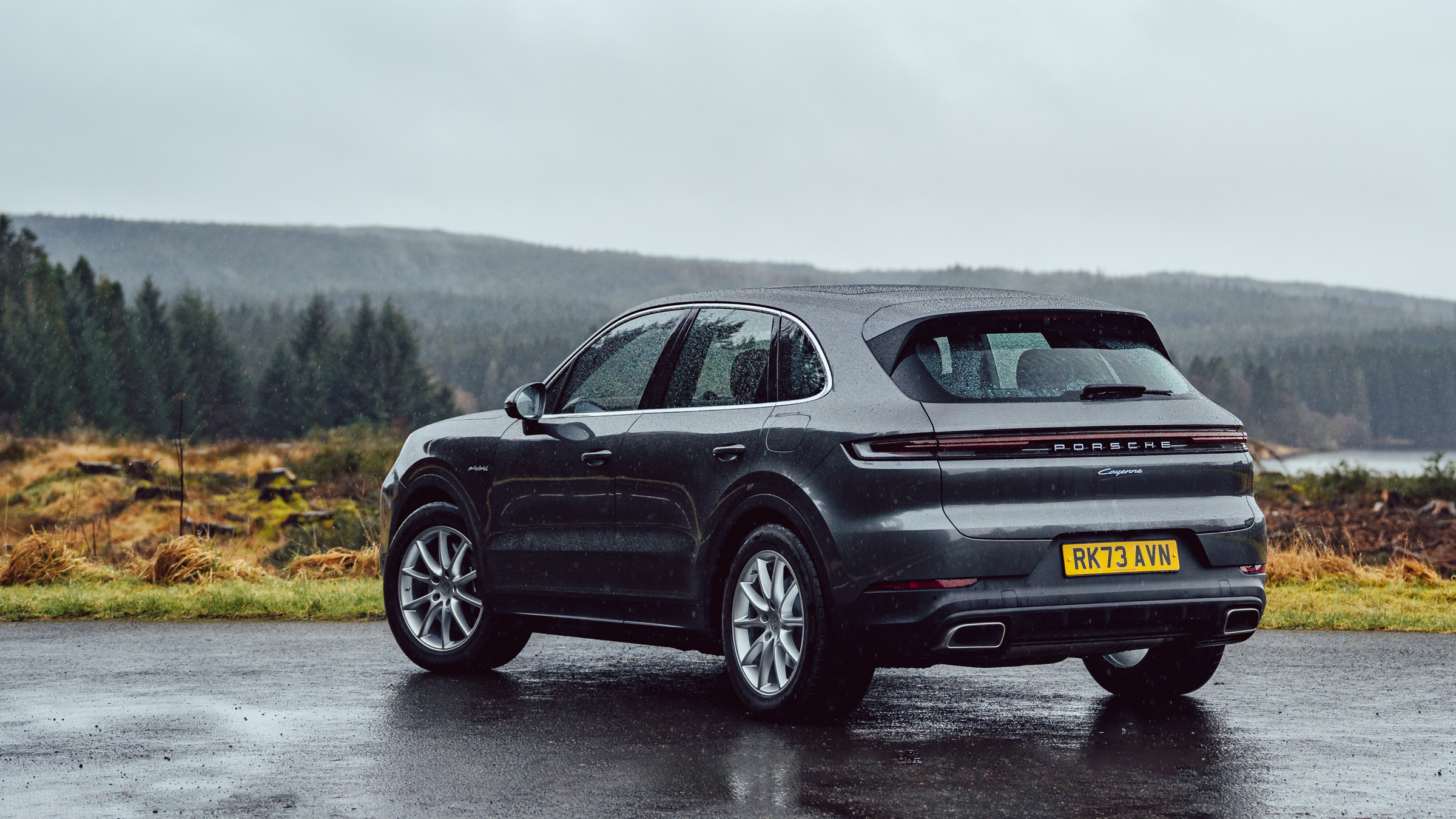
It’s genuinely enjoyable to drive along a quick, challenging road and you soon forget you’re driving a full-size SUV. It feels much smaller than it actually is, with accurate steering and an uncanny ability to change direction and ride bumps without the boat-like wallowing you might expect from a car this big. What I’m trying to say is, it still feels every bit a Porsche, with a sporting dynamism that comes across as both composed and enjoyable. The active air suspension – a £1,760 option on the Cayenne I drove – is surely helping here, and also means you can firm things up in the sports modes if you want to.
Other must-have options fitted to this particular car include rear-axle steering (£1,325), 14-way comfort front seats (£819), leather interior (£2,565) and a panoramic roof (£1,509).
Porsche has always known how to charge for extras, but here I reckon you can get away with chucking well under 10 grand after the initial 80 to get the car you want. With that electric assistance you really don’t need any extra performance, so spend your money on the toys instead.

My day with the Cayenne also included some off-roading, but I suspect even my Mazda MX-5 would emerge unscathed from the same few miles of gravel tracks.
It wasn’t so much a test of the Porsche’s off-roading prowess as it was an opportunity to take some nice photos, but it’s still good to know the Cayenne has a suite of off-roading modes to cater for gravel, mud and snow. Wading depth is 250 mm on the standard suspension or 280 mm if you pay for the active air setup. Fine, but it’s worth remembering that a Land Rover Defender can swim through 900 mm before drowning, and that the Cayenne has always been more about sport than utility.
Back to the road now and time to dig deeper into the new tech. It’s aesthetically a very smart interior; one that just about manages to stay luxurious without looking stark, and I can’t emphasise enough how happy I am that Porsche has fitted physical climate controls.
The entire glossy black panel clicks downward when you press on each illuminated icon for seat heating or cooling. It’s satisfying and not dissimilar to the click of a MacBook’s trackpad. The knurled rocker switches to change temperature are also lovely, and so too is the volume dial. Crucially, they can be located and controlled by feel, without you taking your eyes off the road. Someone has clearly thought about all this, and decided early on that Porsche won’t be relegating everything to the touch screen like everyone else.
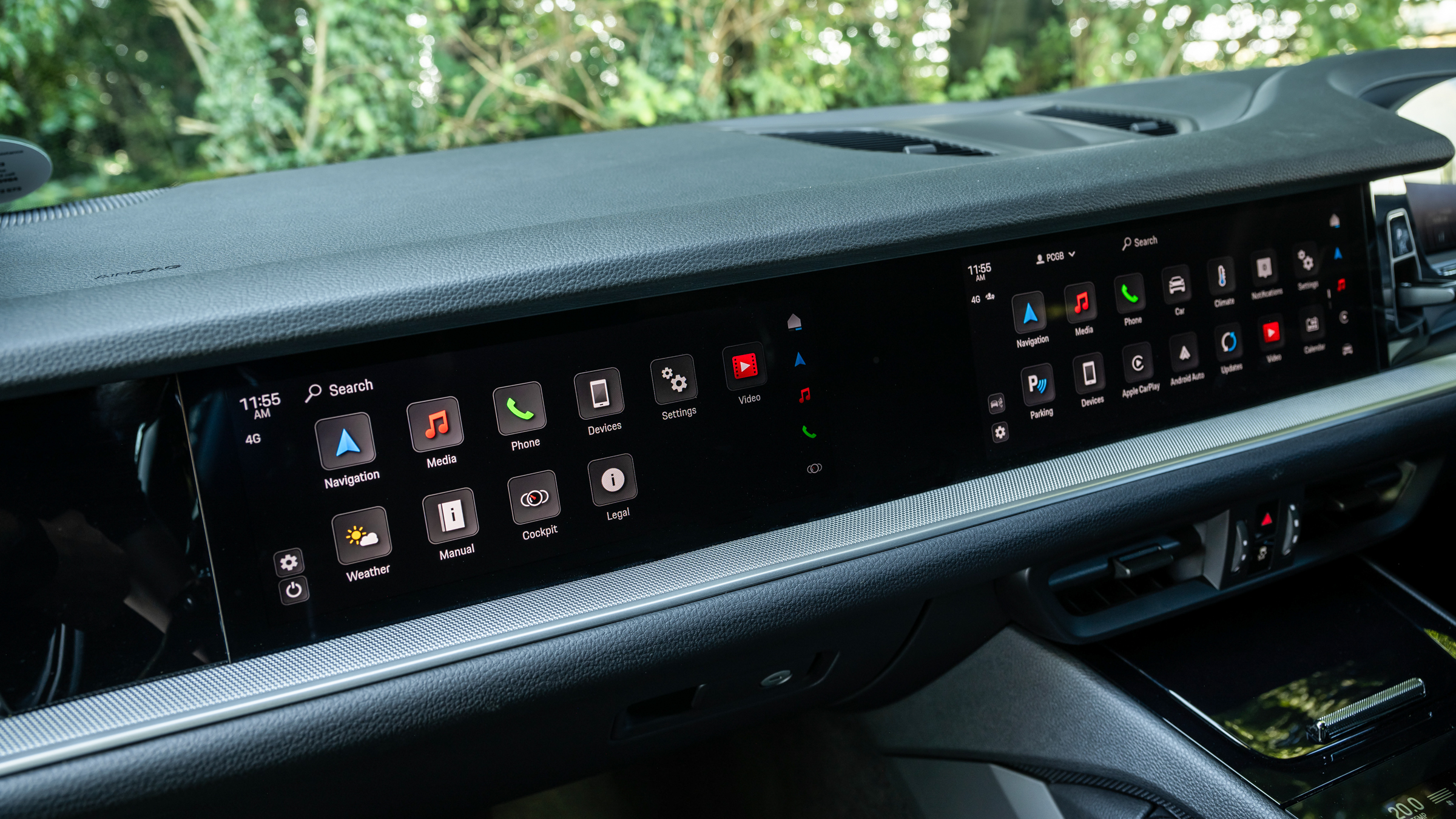
The infotainment system is a pleasure too. Sharp, clear and responsive to your taps and swipes, it’s a decent effort and one that is easy to navigate. You’re still going to plug your iPhone in and use that instead, but at least the option not to is there.
The curved driver display is lovely. I’d miss the central analogue rev counter if it were stripped from a 911, but here I’m happy with its digitised successor, flanked by nicely legible (and customisable) readouts for fuel, battery and trip data. Even Porsche’s mandatory beeps and bongs to shout at you for driving at 31 mph are discreet, and although they come back to life every time the car is started, they’re silenced again with a couple of prods of the touchscreen.

Lastly, rear legroom is plentiful, the seats are comfortable and there’s 627 litres of space in the boot. The Cayenne remains a solid all-rounder with a sportier edge than most of its rivals at this price point. It looks as good as an SUV can, is plenty practical, feels like acceptable value by 2024’s inflated standards, perfectly deploys a broad tech update to the cabin and retains enough Porsche DNA to be enjoyable on any road.
Alistair is a freelance automotive and technology journalist. He has bylines on esteemed sites such as the BBC, Forbes, TechRadar, and of best of all, T3, where he covers topics ranging from classic cars and men's lifestyle, to smart home technology, phones, electric cars, autonomy, Swiss watches, and much more besides. He is an experienced journalist, writing news, features, interviews and product reviews. If that didn't make him busy enough, he is also the co-host of the AutoChat podcast.
